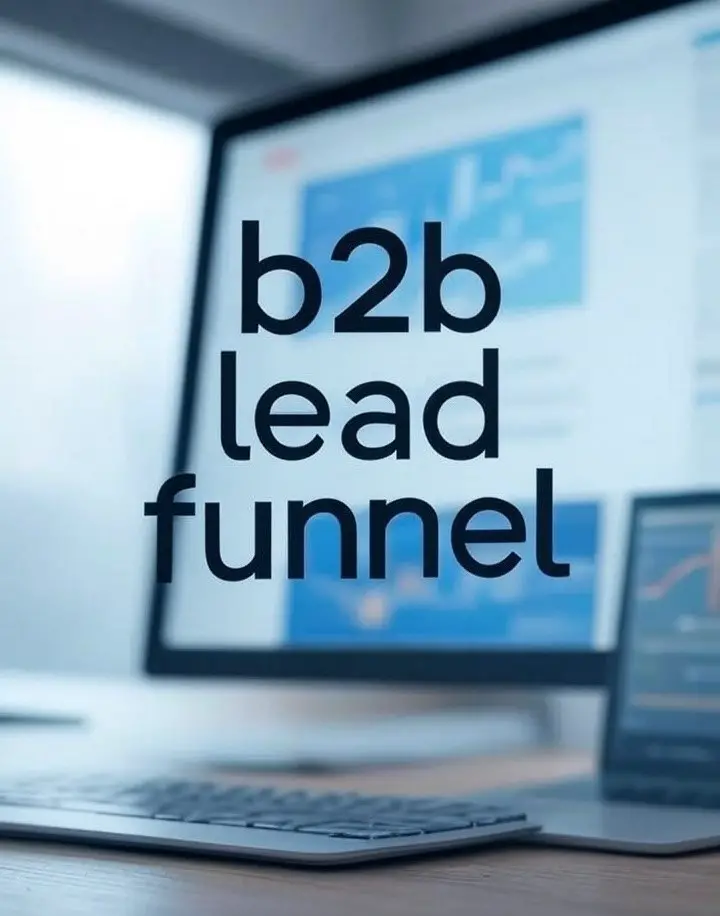It also helps businesses save money. They can focus on the best leads. These are people who are more likely to buy. This stops them from chasing everyone. It makes their marketing more effective. When efforts are focused, results are better. This efficiency is a big win. It means more success for less cost. Furthermore, a good funnel helps predict future sales. Businesses can see how many new clients they might get. This helps them plan for growth. They can hire more people. They can invest in new tools. This foresight is very valuable. It builds a stronger, more stable business.
The Wide Top: Awareness and Interest
At the very top of the funnel, things are wide open. This is where businesses try to get noticed. They want many other businesses to know they exist. This part is called "Awareness." Imagine a big billboard on a highway. Many cars drive by. Many people see the billboard. They become aware of the company. In the B2B world, this happens in different ways.
One way is through online articles. Businesses write helpful blogs. These articles answer common questions. They share useful information. Another way is through social media. Companies post interesting updates. They share their success stories. They might even run online ads. These ads pop up when people search for things. The goal is to catch their eye. It is about making a first good impression. Many people will see these things. Only some will be interested.
This leads to the next step: "Interest." Once a business knows about you, they might want to learn more. They might click on your website. They might download a free guide. They are showing a little bit of interest. It is like someone Browse in a shop. They are not ready to buy yet. But they are looking around. Businesses try to make their content very appealing. They want people to stick around. They want to show how they can help. This stage is about attracting as many possible leads as possible. It is about planting the seed of an idea. Looking for niche-based email leads? Visit our official website telemarketing data and find exactly what you need.
Image 1 Concept: A simple illustration of a wide funnel. At the top, there are many small, diverse icons representing various types of businesses/companies (e.g., a factory, an office building, a computer server icon). Above these icons, thought bubbles or lightbulbs indicate "Awareness" and "Interest," with magnifying glasses showing people trying to learn more. The overall feel should be clean and easy to understand.
After the interest phase, businesses try to gather more details. They want to know who is really keen. This is where contact forms come in handy. A company might ask for an email address. They might offer a special report. This trade of information is important. It helps them move from just a viewer to a potential lead. This is still the top of the funnel. But it is getting ready for the next steps.
Moving Down: Consideration and Engagement
Once a lead shows interest, they move further down. This part of the funnel is called "Consideration." Now, the lead is not just aware. They are actively thinking about your product or service. They are comparing you with others. They are checking if you can solve their problem. During this stage, businesses offer more detailed information. They might send specific case studies. These stories show how they helped other companies. They might offer free product demos.

The business might also hold online webinars. These are like online classes. Experts share their knowledge. They show how their product works. This helps the potential client understand better. The goal is to build trust. It is about showing expertise. It is also about proving value. Companies want leads to see them as the best choice. This stage is very interactive. It involves back-and-forth communication. The sales team might reach out. They might send personalized emails. They answer specific questions.
This intense interaction leads to "Engagement." The lead is now actively talking. They are asking about prices. They are discussing their specific needs. This is a very positive sign. It means they are serious. It shows they are close to making a decision. Businesses try to make this experience very helpful. They want to make it easy for the client. They want to remove any doubts. This stage prepares the lead for the final choice. It is a critical period.
Nurturing Leads for Success
Not all leads are ready to buy right away. Some need a little more time. This is where "lead nurturing" comes in. It means keeping in touch with them. You provide helpful information over time. This keeps your company in their mind. It builds a stronger relationship. It is like watering a plant. You help it grow strong. This often involves automated emails. These emails can share new articles. They can offer new tips. They are gentle reminders of your value.
The goal of nurturing is to build trust. It also helps educate the lead. They learn more about their needs. They also learn how your solution helps them. This process is not about pushing for a sale. It is about being a helpful resource. When the lead is finally ready, they will remember you. This makes them more likely to choose your company. Nurturing helps shorten the sales cycle. It makes the journey smoother for everyone. It shows that you care about their problems.